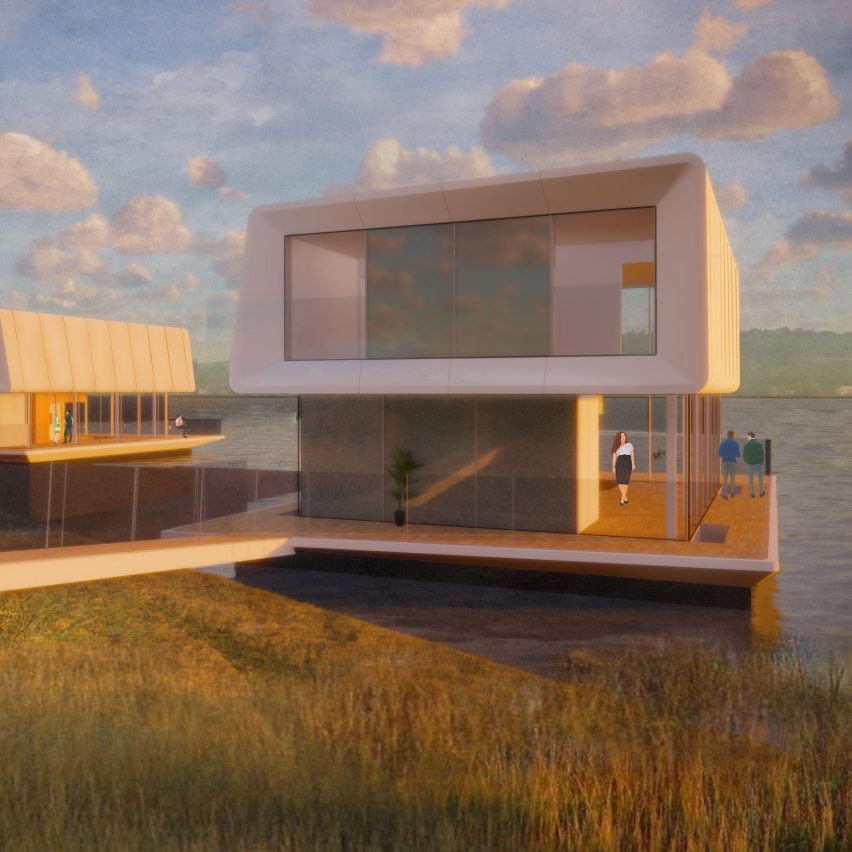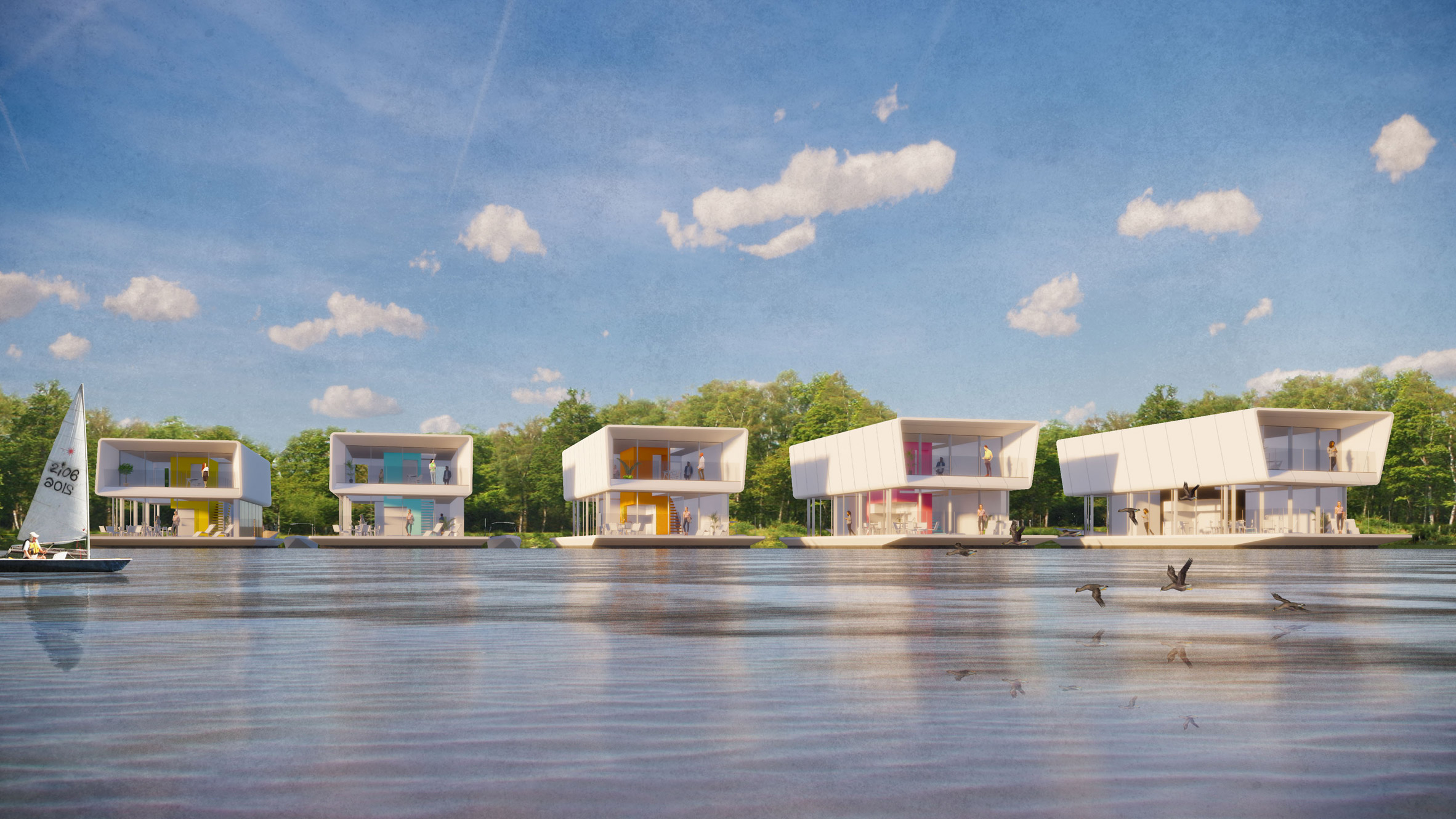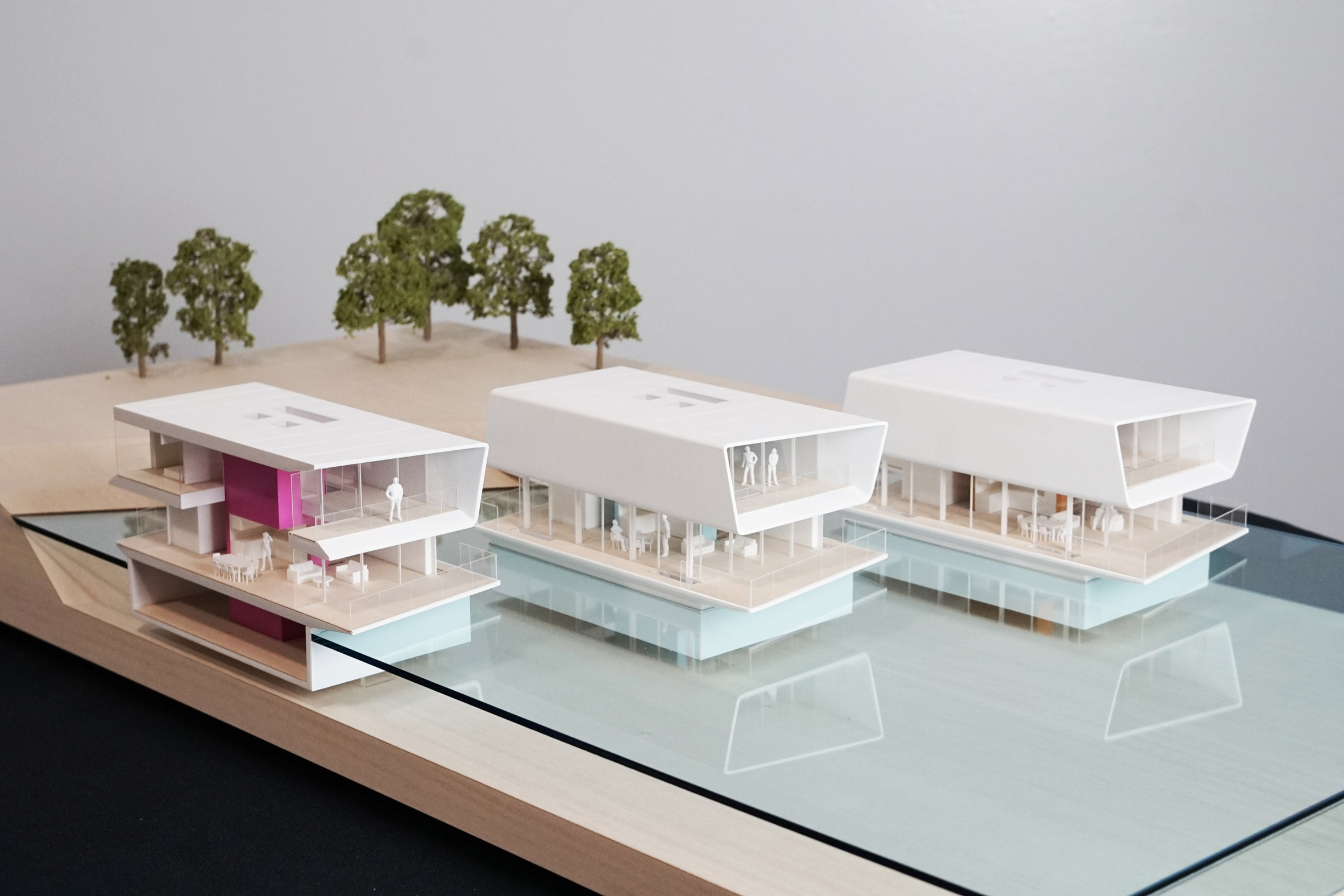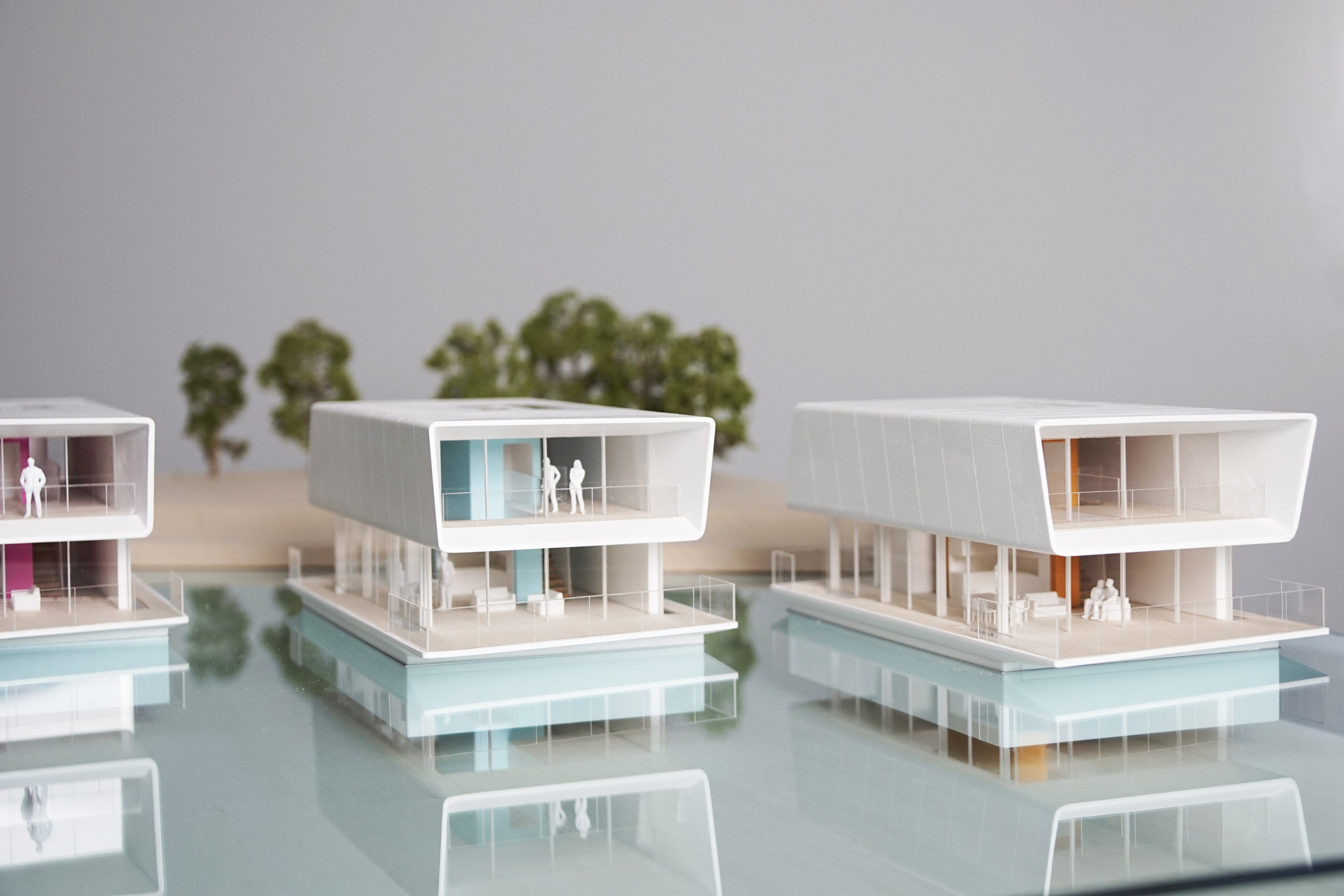Floating concrete houses proposed for areas at risk from rising sea levels
British architecture studio Grimshaw and Dutch manufacturers Concrete Valley are developing Modular Water Dwellings that could be built in places at risk from climate change. The floating houses would mitigate the risk of living in places that could be flooded as rising temperatures melting the ice caps. According to the Intergovernmental Panel on Climate Change, sea The post Floating concrete houses proposed for areas at risk from rising sea levels appeared first on Dezeen.


British architecture studio Grimshaw and Dutch manufacturers Concrete Valley are developing Modular Water Dwellings that could be built in places at risk from climate change.
The floating houses would mitigate the risk of living in places that could be flooded as rising temperatures melting the ice caps. According to the Intergovernmental Panel on Climate Change, sea levels could rise as much as 1.1 metres by the year 2100.

Concrete pontoons – floating structures filled with air – would support a lower deck with walls and columns with a concrete living pod on top.
Grimshaw and Concrete Valley also suggested their concept could be adopted in urban areas where land prices are to high to build affordable housing.

Prefabricated in factories, the Modular Water Dwellings would be cheaper than normal houses with foundations and could be used to turn waterfronts into new city neighbourhoods.
"In facing the realities of global transformations, be they climate change, increased urbanisation or reduced resources, it is critical that architects and designers respond to these concerns in a variety of ways," said associate principal at Grimshaw Jorrin ten Have.
"By addressing specific challenges confronting current and future populations, the Modular Water Dwellings offer an affordable, sustainable and efficient alternative for safe and desirable housing."

The modular element would make the houses easy to make in large numbers, and therefore cheaper to produce said the companies.
A concrete and glass frame would be able to last for decades, and different occupants could customise the standard frame as they saw fit.
The projecting upper deck would shade the lower one, and solar panels could be attached to the exterior to allow each Modular Water Dwelling to generate its own power. Now the concept has been developed, Grimshaw and Concrete Valley are working on prototypes.
Grimshaw was founded 1980 by Nicholas Grimshaw, an architect who had already experimented with affordable modular housing in his 1970 project Park Road Apartments – a tower for his housing co-operative to live in.
In California, a company called Dvele has made prefabricated houses with solar panels that can be lived in off-grid, and The D*Haus Company has developed a concept for pre-fabricated timber homes that could perch above rising sea levels on 3D-printed concrete stilts.
The post Floating concrete houses proposed for areas at risk from rising sea levels appeared first on Dezeen.
